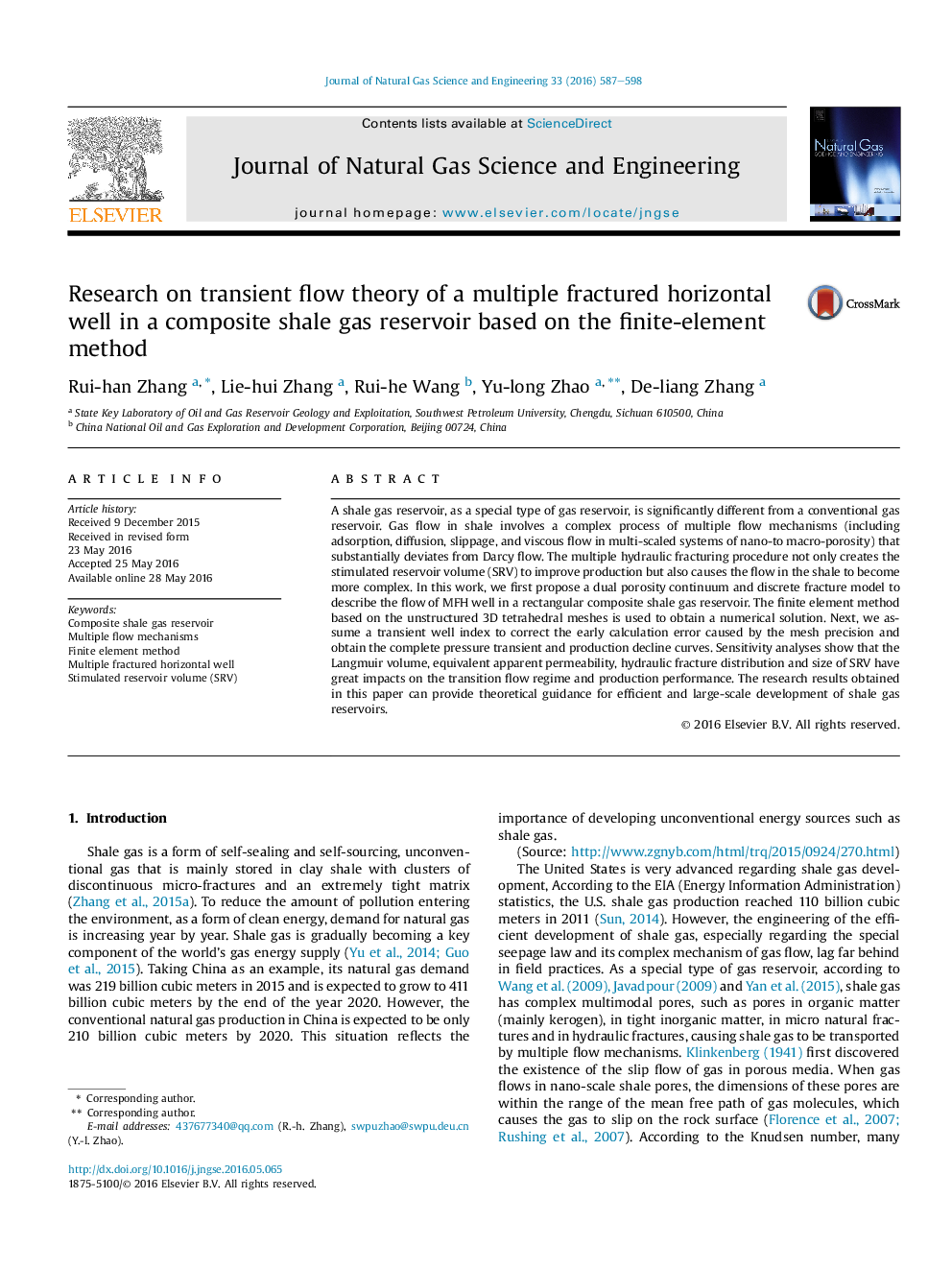| Article ID | Journal | Published Year | Pages | File Type |
|---|---|---|---|---|
| 1757095 | Journal of Natural Gas Science and Engineering | 2016 | 12 Pages |
•The flow of MFH well in rectangular composite shale gas reservoir is researched.•Finite element method based on the unstructured 3D tetrahedral meshes is used.•The influences of multiple flow mechanisms on pressure response and production performance are analyzed.
A shale gas reservoir, as a special type of gas reservoir, is significantly different from a conventional gas reservoir. Gas flow in shale involves a complex process of multiple flow mechanisms (including adsorption, diffusion, slippage, and viscous flow in multi-scaled systems of nano-to macro-porosity) that substantially deviates from Darcy flow. The multiple hydraulic fracturing procedure not only creates the stimulated reservoir volume (SRV) to improve production but also causes the flow in the shale to become more complex. In this work, we first propose a dual porosity continuum and discrete fracture model to describe the flow of MFH well in a rectangular composite shale gas reservoir. The finite element method based on the unstructured 3D tetrahedral meshes is used to obtain a numerical solution. Next, we assume a transient well index to correct the early calculation error caused by the mesh precision and obtain the complete pressure transient and production decline curves. Sensitivity analyses show that the Langmuir volume, equivalent apparent permeability, hydraulic fracture distribution and size of SRV have great impacts on the transition flow regime and production performance. The research results obtained in this paper can provide theoretical guidance for efficient and large-scale development of shale gas reservoirs.
